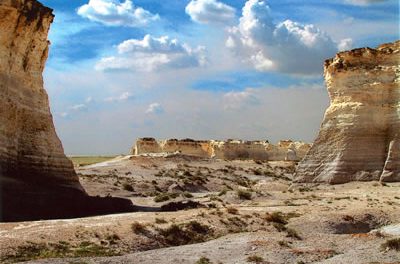Jesus had only two eyes on the earth. How come He has seven eyes in the Heaven?
Those sentences which are colored in orange are from Maharishi Dayananda Saraswati book Satyarth Prakash (The Light of Truth) and those which are colored in black are Jerry Thomas’s response.
"And I beheld, and , lo, in the midst of the throne and of the four beasts, and in the midst of the elders, stood a Lamb as it had been slain, having seven horns and seven eyes, which are the seven spirits of God sent forth into all the earth." (5:6.)
C. ~ Now, look at the imaginary character of St. John's dream! In that heaven there are only Christians, four beasts and Christ, but none else. It is very strange that while on earth Christ had only two eyes and no trace of horns, but in the heaven he got seven eyes and seven horns, which are really the seven spirits of God! What a pity, the Christians have accepted such nonsense ( as revelation). They ought to have used a little sense anyhow.
Answer: For the interpretation of the symbolic language in the prophetical books, please read the article Introduction to the Revelation and Figurative Language of Prophetical Writings.
Maharishi missed on the prophetical language in most of the questions in revelation due to which I have to repeat and remind the same thing in almost all answers in Revelation.
I will quote John Gill again for the interpretation of this passage.
John Gill writes: “and in the midst of the elders stood a Lamb;
John, upon the intimation given him by the elder, lift up his eyes, and with great earnestness looked about, and saw the person he pointed at, though not in the form of a lion, but in the appearance of a lamb, to which Christ, both in the Old and New Testament, is often compared; and that very aptly, for his innocence and purity of nature; for his harmless and inoffensive conversation; and for his meek and humble deportment throughout the whole of his life; and for his patience at the time of his sufferings and death; and for his usefulness both for food and clothing to his people; and chiefly for his sacrifice for them, typified both by the passover lamb, and by the lambs of the daily sacrifice: hence it follows, as it had been slain; or "as having been slain"; Christ had been really slain by the wicked hands of the Jews, and not in appearance only; the as, here, is not a note of mere similitude and likeness, but of reality and truth; see (John 1:14) (Philippians 2:7) ; but he was now risen from the dead, and therefore is said to have been slain some time before, though now alive; and he appeared to have the marks of his sufferings and death upon him, as he had after his resurrection the print of the nails and spear, in his hands, feet, and side; and he was as a lamb that had been newly or lately slain: and it may denote the continued efficacy of his blood, to cleanse from all sin, and of his sacrifice to take it away; he was as a Lamb slain from the foundation of the world, with respect to the continual virtue of his blood and sacrifice; and he will be, on the same account, the Lamb as it had been slain, unto the end of the world. The position and situation of this Lamb were, he "stood in the midst of the throne, and of the four beasts, and in the midst of the elders"; he "stood", being risen from the dead, and ascended up into heaven, but was not as yet set down upon the throne with his Father, but was very near it; he stood before it, ready to be placed upon it, and receive his power and his kingdom; he stood between the throne, and between the living creatures, and the elders, being the Mediator between God, and his church, and people; he, appeared before the throne for them, as their advocate, and stood ready to give them all the assistance, and to do them all the good he could: and this his situation may also denote, that he is continually in view, is always in the sight of God, as the Lamb that had been slain; his blood is carried within the vail, is sprinkled upon the mercy seat, and is always in sight, and calls for peace and pardon; and God the Father always looks upon it, and to his righteousness, sacrifice, and satisfaction, on account of his people: moreover, his being in the midst of the four living creatures, and elders, may signify his presence in his churches, and with his ministers, which he has promised them to the end of the world. This Lamb is further represented, as having seven horns; it is very unusual for a lamb to have horns, and especially seven: these horns are expressive of the power of Christ, of his dominion and government, even of his kingly power and authority; so kings are signified by horns in (Daniel 8:20,21) (7:24) ; and Christ himself is called the horn of David, and the horn of salvation, (Psalms 132:17) (Luke 1:69) ; and signify, that upon his resurrection from the dead, and ascension to heaven, he was made and declared Lord and Christ; and the number "seven" expresses the fulness and perfection of his power and authority, having, as Mediator, all power in heaves and in earth given him; and what is above all power, might, dominion, and every name in this world, and that to come; and may have some relation to the seven states of his churches in so many periods of time; and show not only that he has power sufficient to protect and defend his people in all times, and to push at and destroy his and their enemies, but to open the then sealed book, and unloose the seals: and as another qualification for this work, it follows, and seven eyes, which are the seven spirits of God sent into all the earth; which some understand of angels, and of a sufficient number of them, which belong to Christ, and are at his command, and who are ready to do his will, and to be sent forth by him, into the several parts of the earth, to execute his pleasure: but these rather design the Spirit of God and his gifts, which Christ received without measure, both in his human nature, at his incarnation, and after his resurrection from the dead, and ascension; which he bestowed on his apostles and ministering servants, whom he sent forth into all the world, to preach his Gospel with them; and which he has, more or less, ever since continued to do.”
So, it is very evident that the Maharishi without knowing the meaning of the prophetical language has been exposing his ignorance in all these questions.




